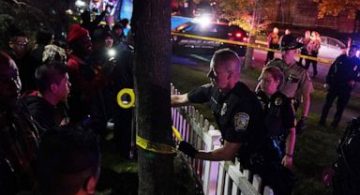
Thousands of people have returned to neighborhoods evacuated during Southern California’s deadly wildfire but officials said the threat is far from over.
The huge blaze briefly gained renewed life Tuesday with a flare-up in the Santa Monica Mountains before water- and fire retardant-dropping aircraft beat it back.
However, except for an apartment building that burned in coastal Malibu, there was little sign of fire activity elsewhere in the vast burn zone west of Los Angeles.
The weeklong blaze in Ventura and Los Angeles counties had blackened an area about the size of Denver and was 40 percent contained. Since last Thursday, the blaze had marched steadily toward the sea, engulfing mobile homes, scenic canyon getaways and celebrity estates.
Firefighters could make more progress if relentless Santa Ana winds start to diminish as predicted Wednesday and Thursday.
Authorities allowed residents back into several communities on Tuesday, including a section of Malibu. Other areas have been repopulated since the weekend. Tens of thousands of people remained under evacuation orders, down from a high of as many as 250,000.
Officials tempered optimism with caution, saying there were hotspots and pockets of unburned vegetation that could ignite.
“We are not out of the woods yet. We still have some incredibly tough conditions ahead of us,” Ventura County Fire Chief Mark Lorenzen said.
The death toll from the Woolsey fire stood at two — a pair of adults found last week in a car overtaken by flames. They have not been identified.
The number of homes and other structures destroyed had reached 435 but that number was sure to rise, warned Los Angeles County Fire Chief Daryl Osby. Damage assessments were continuing, with crews having to gain access to canyon areas on foot.
Some people who stayed behind in coastal communities that were cut off by road closures got supplies by boat. Gas, food, baby wipes and horse pellets were among the items brought ashore in the Paradise Cove area of Malibu. Some residents donned wetsuits and swam ashore with cases of water and beer.
“It’s pretty cool. It’s really amazing that people out there know that we’re kind of stranded here in Malibu,” Cherie Millford Smart said.
The fire had burned near 152 square miles (393 square kilometers) of brush and timber, destroying more than 80 percent of National Parks Service land in the Santa Monica Mountains National Recreation Area.
The area has not seen such a destructive blaze since 1993. The blaze has left an array of hazards, including trees ready to fall, downed power lines, toxins, water main and gas leaks.
A forecast of possible rain next week would help firefighters but also raised the prospect of potential mud flows, Osby said.
The cause of the Southern California fires remained under investigation.
Southern California Edison said last week that it reported to the California Public Utilities Commission “out of an abundance of caution” that there was an outage on an electrical circuit near where the fire started Thursday but there was no indication its equipment was involved in the fire reported two minutes after the outage.
Downed power lines and blown transformers have been blamed for several of the deadly fires that have burned in recent years.
A lawsuit was filed Tuesday over a wildfire in Northern California, where at least 48 people were confirmed dead in the Camp Fire that obliterated the town of Paradise. The suit on behalf of some victims accuses Pacific Gas & Electric Co. of causing the massive blaze.
A landowner near where the fire began said PG&E notified her the day before the wildfire that crews needed to come onto her property because some wires were sparking.
———
Myers reported from Thousand Oaks. Associated Press writers John Antczak and Christopher Weber contributed from Los Angeles.





